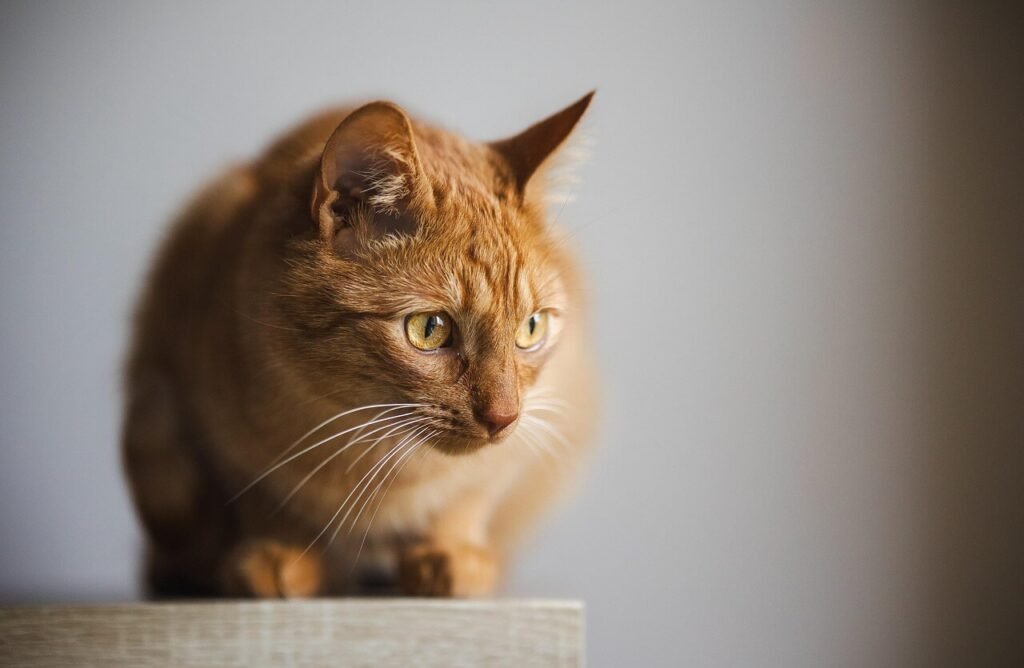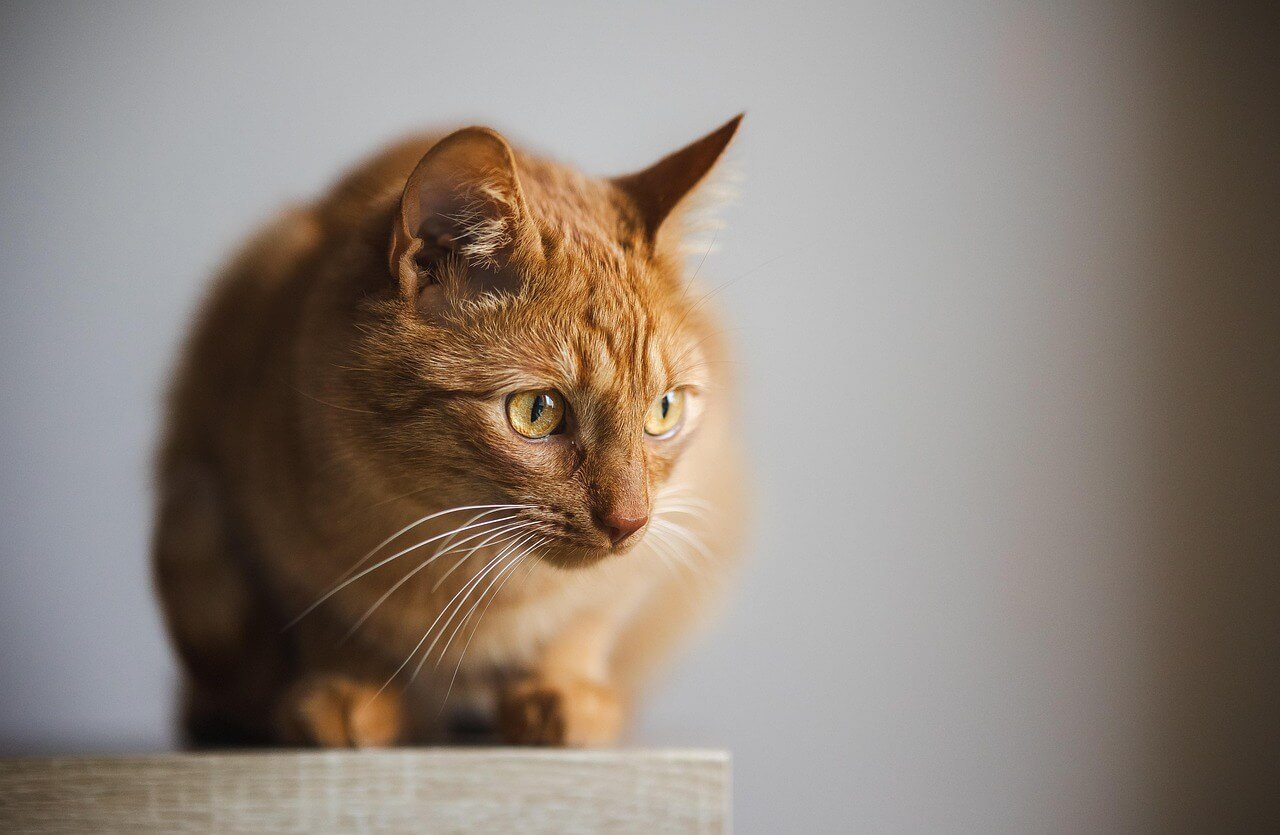Cat Sneezing and Vomiting: What It Means and What to Do
It’s not uncommon for cats to sneeze or vomit occasionally, but when these symptoms occur together or frequently, it can be a cause for concern. While sneezing might seem like a minor irritation, and vomiting could appear as an isolated incident, the combination of the two may indicate underlying health issues that need attention. Understanding why your cat is experiencing these symptoms is crucial to ensuring their well-being. In this article, we’ll explore the potential causes of sneezing and vomiting in cats, how to identify red flags, and what steps you can take to help your feline friend feel better.
Why Is My Cat Sneezing? Uncovering the Reasons Behind the Sniffles
Sneezing in cats can stem from a variety of causes, ranging from harmless irritants to more serious health concerns. Identifying the root cause can help you determine whether your cat needs veterinary care or if the sneezing will resolve on its own.
Upper Respiratory Infections :
Viral or bacterial infections are common culprits, especially in kittens or cats exposed to other animals.Allergies :
Dust, pollen, or household chemicals can irritate your cat’s nasal passages, leading to sneezing.Foreign Objects :
Small particles like grass, hair, or dirt lodged in the nose can trigger sneezing fits.Dental Issues :
Problems like abscesses or infected teeth can affect the sinuses and cause sneezing.Environmental Irritants :
Strong perfumes, cleaning products, or cigarette smoke can irritate your cat’s sensitive respiratory system.
While occasional sneezing isn’t usually alarming, persistent or frequent sneezing warrants further investigation. Pay attention to accompanying symptoms like nasal discharge or lethargy.
Why Is My Cat Vomiting? Exploring the Possible Triggers
Vomiting is a common issue in cats, but it can have many different causes. Some are mild and temporary, while others may signal a more serious problem. Here’s a breakdown of potential reasons:
Hairballs :
Grooming leads to swallowed fur, which can accumulate in the stomach and cause vomiting.Dietary Indiscretion :
Eating something unusual, spoiled, or non-food items can upset your cat’s stomach.Food Intolerances :
Certain ingredients in your cat’s food might not agree with them, leading to digestive issues.Infections or Parasites :
Bacterial, viral, or parasitic infections can irritate the gastrointestinal tract.Chronic Conditions :
Diseases like kidney failure, pancreatitis, or inflammatory bowel disease may cause recurring vomiting.
If your cat vomits once and seems fine afterward, it’s likely nothing to worry about. However, repeated episodes or additional symptoms should prompt a visit to the vet.
Check this guide 👉Why Is My Cat Sneezing Blood? Best 7 Expert Tips!
Check this guide 👉Why Is My Cat Sneezing and Have Watery Eyes? Best 7 Tips!

Causes of Sneezing | Causes of Vomiting |
|---|---|
Upper respiratory infections | Hairballs |
Allergies | Dietary indiscretion |
Foreign objects in the nasal passage | Food intolerances |
Dental problems | Infections or parasites |
Environmental irritants | Chronic conditions like IBD or kidney disease |
Red Flags: When Sneezing and Vomiting Require Immediate Attention
While occasional sneezing or vomiting may not be alarming, certain signs indicate that your cat needs urgent care. Recognizing these warning signals can make all the difference in your cat’s recovery.
Frequent Sneezing Episodes :
If your cat sneezes multiple times a day for several days, it could signal an infection or allergy.Blood in Vomit or Nasal Discharge :
The presence of blood is always a cause for concern and requires immediate veterinary evaluation.Lethargy and Loss of Appetite :
A lack of energy or refusal to eat often points to a more serious underlying condition.Difficulty Breathing :
Labored breathing alongside sneezing indicates respiratory distress, which needs prompt treatment.Dehydration or Weight Loss :
Persistent vomiting can lead to dehydration and malnutrition, both of which are dangerous for cats.
If you notice any of these signs, don’t delay—consult your veterinarian right away. Early intervention can prevent complications and improve outcomes.
Caring for Your Cat: Tips to Manage Sneezing and Vomiting
While some cases of sneezing and vomiting require professional care, there are steps you can take at home to support your cat’s recovery and comfort. These measures focus on reducing triggers and promoting overall health.
Keep the Environment Clean :
Remove potential irritants like dust, smoke, or strong odors to ease respiratory symptoms.Brush Your Cat Regularly :
Frequent grooming reduces hair ingestion, minimizing the risk of hairballs.Provide Fresh Water :
Staying hydrated helps flush out toxins and supports digestive health.Feed High-Quality Food :
Choose easily digestible, balanced meals to reduce the likelihood of food-related vomiting.Monitor Symptoms Daily :
Keep track of your cat’s behavior, appetite, and bathroom habits to share with your vet if needed.
Simple changes at home can make a big difference in managing mild cases of sneezing and vomiting. However, always consult your vet if symptoms persist.
Staying Ahead: How to Minimize the Risk of Sneezing in Cats
Prevention is always better than cure, especially when it comes to your cat’s respiratory health. By taking proactive steps, you can reduce the likelihood of sneezing episodes and keep your cat comfortable. Here are some preventative measures to consider:
Maintain a Clean Living Space :
Regularly vacuum and dust your home to minimize allergens like pollen, mold, or pet dander.Use Air Purifiers :
Air purifiers with HEPA filters can help remove airborne irritants that may trigger sneezing.Avoid Strong Scents :
Refrain from using perfumes, scented candles, or harsh cleaning products around your cat.Keep Vaccinations Up-to-Date :
Vaccines protect against common viral infections that cause upper respiratory issues.Limit Exposure to Sick Animals :
Keep your cat away from other animals showing signs of illness to prevent contagious infections.
By implementing these preventative strategies, you can create a healthier environment for your cat and potentially avoid sneezing altogether.
Food Matters: How Diet Can Help Reduce Vomiting Episodes
Your cat’s diet plays a significant role in their digestive health. Making thoughtful adjustments to their meals can help minimize vomiting and promote overall well-being. Here are some dietary tips to consider:
Switch to a High-Fiber Diet :
Fiber-rich foods can aid digestion and reduce hairball formation.Introduce Wet Food :
Wet food provides additional hydration, which is beneficial for cats prone to vomiting.Feed Smaller, More Frequent Meals :
Breaking meals into smaller portions can prevent overeating and ease digestion.Eliminate Problematic Ingredients :
Identify and remove ingredients your cat may be sensitive to, such as dairy or certain proteins.Gradual Diet Changes :
When switching foods, do so gradually to avoid upsetting your cat’s stomach.
A balanced and tailored diet can go a long way in preventing vomiting episodes and ensuring your cat stays healthy and happy.
Recovery Indicators: How to Know Your Cat Is on the Mend
After addressing sneezing and vomiting, it’s important to monitor your cat for signs of improvement. These indicators can reassure you that your efforts—or veterinary treatments—are working effectively.
Improved Appetite :
A return to normal eating habits suggests your cat is feeling better.Increased Energy Levels :
If your cat resumes playful behavior, it’s a positive sign of recovery.Clear Nasal Passages :
Absence of nasal discharge or sneezing indicates respiratory healing.Consistent Bathroom Habits :
Regular bowel movements without vomiting show digestive stabilization.Bright Eyes and Glossy Coat :
Healthy physical appearance reflects overall well-being and vitality.
These signs of recovery highlight your cat’s progress and provide peace of mind. Continue monitoring and consult your vet if any concerns persist.
Frequently Asked Questions About Cat Sneezing and Vomiting
Is it normal for my cat to sneeze occasionally?
Yes, occasional sneezing is normal, especially if caused by dust or mild irritants.
Why does my cat vomit after eating?
This could be due to eating too quickly, food intolerance, or an underlying condition.
Can allergies cause both sneezing and vomiting?
Yes, severe allergic reactions can affect both the respiratory and digestive systems.
Should I withhold food if my cat is vomiting?
Withholding food for 12 hours (with vet approval) can help settle the stomach, but water should always be available.
How can I tell if my cat has a hairball vs. another issue?
Hairballs typically come with retching sounds and produce cylindrical wads of fur, while other issues may involve bile or blood.
Final Thoughts: Prioritizing Your Cat’s Health
Sneezing and vomiting are symptoms that no cat owner wants to deal with, but understanding their potential causes empowers you to act swiftly and effectively. Whether it’s addressing environmental irritants, managing hairballs, or seeking veterinary care for chronic issues, your attentiveness plays a vital role in keeping your cat healthy. Remember, early detection and intervention are key to resolving most health concerns. By staying informed and proactive, you can ensure your feline companion enjoys a long, happy, and sneeze-free life.
Understanding Cryptosporidium in Cats: Best 7 Expert Tips! – Spot symptoms, treat safely, and stop parasite spread in your home.
Understanding Cryptosporidium in Dogs: Best 7 Expert Tips! – Learn symptoms, treatment & prevention for this stubborn gut parasite.
Understanding Syringomyelia in Cats: Best 7 Expert Tips! – Recognize signs, manage pain, and support your cat’s neurological health with vet-backed guidance.
Understanding Syringomyelia in Dogs: Best 7 Expert Tips! – Expert insights on symptoms, MRI diagnosis, pain management & quality of life.





